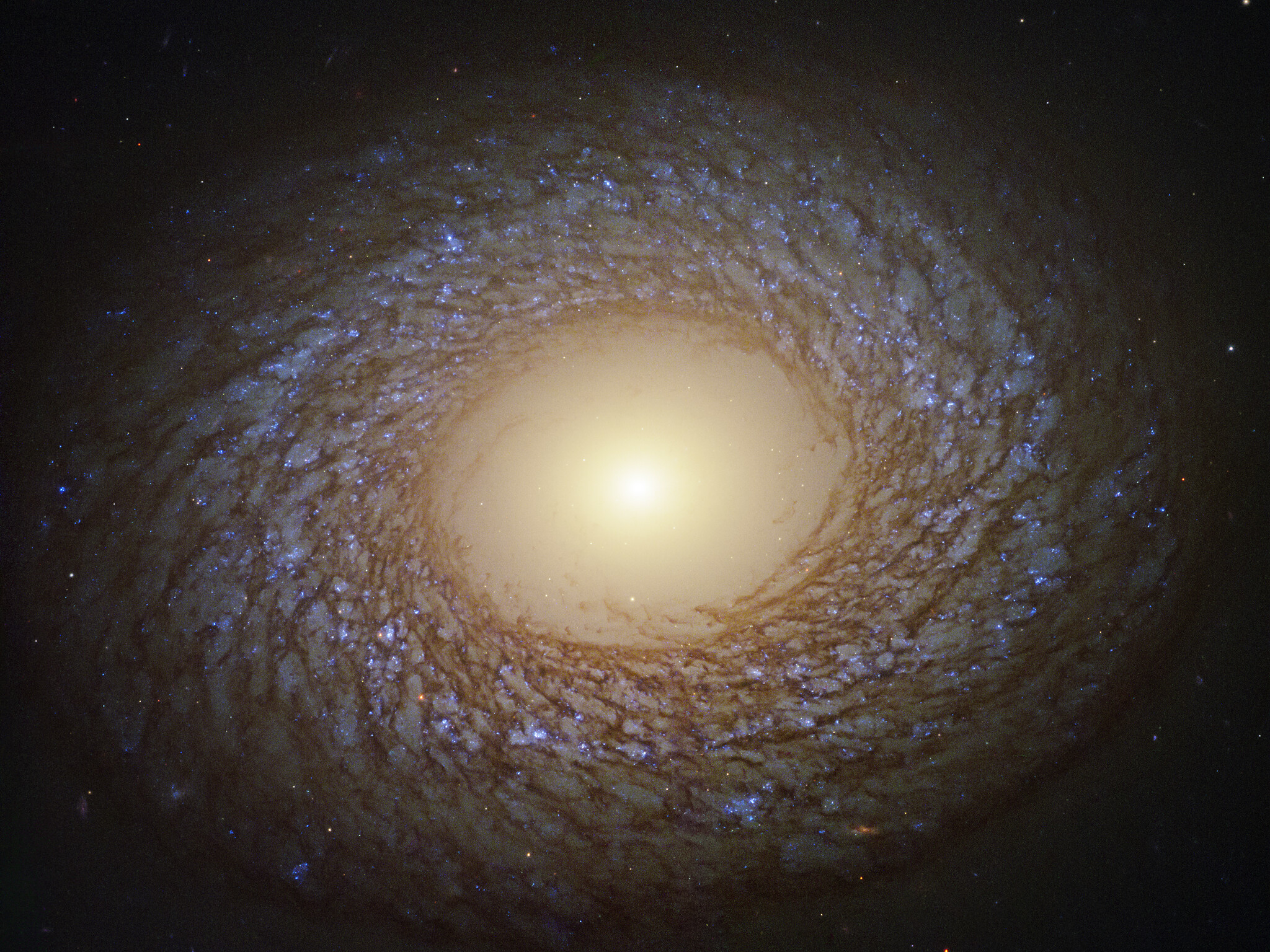

The Hubble Space Telescope just imaged a galaxy nestled 67 million light-years away in the Cancer constellation—and it’s fluffy. Known as NGC 2775, the galaxy has fuzzy arms spiraling out from its center like the limbs of a white dog, and it’s sprinkled with millions of young, scorching blue stars. While some galaxies have defined, sparkling arms called grand design spirals, the spirals of flocculent galaxies are still there—but they’re obscured by clouds of patchy gas, which create that snuggly dog fur effect.
NGC 2775′s spirals of gas, which act as star production factories, have spread far out from the galaxy’s unusually massive center bulge. Earlier in the galaxy’s life, the bulge would’ve been filled with gas that long ago transformed into clusters of white-hot stars. The current enormous size of the bulge and the relatively small ratio of spiral arms to bulge size reveal that this galaxy hasn’t been producing many stars lately, according to the European Space Agency (ESA), which partnered with NASA to produce this image.
While the sharper, sparklier grand design spiral galaxies are commonly depicted in news media and space films, they make up only 10 percent of all galaxies. Nearly 70 percent of all galaxies are flocculent, like NGC 2775, or multiple-arm, a hybrid between flocculent and grand design, like the Milky Way. Most galaxies in our interstellar neighborhood are grand design spirals.
This dreamy photograph of NGC 2275 is the latest of the Hubble’s discoveries. Launched thirty years ago, on April 24, 1990, the Hubble Space Telescope has traveled 4 billion miles in a continuous orbit around the Earth. The telescope, which is the size of a tractor trailer, has produced enough raw scientific information to fuel 15,000 distinct scientific papers. Using its powerful lens, it’s peered back in time, photographing locations more than 13.4 billion light-years from Earth.
NASA prepares to launch the Hubble’s successor, the James Webb Space Telescope, in March 2021, which aims to map the early universe and peer much further into space than the Hubble ever could. When it’s launched, Webb will be the largest telescope in space—it’s so enormous that it has to fold, like paper, into a rocket, and will unfold once it’s out in space. With 100 times the magnification power of the Hubble, astronomers will use the Webb to photograph the first galaxies formed after the Big Bang—and perhaps encounter many other fluffy galaxies along the way.
